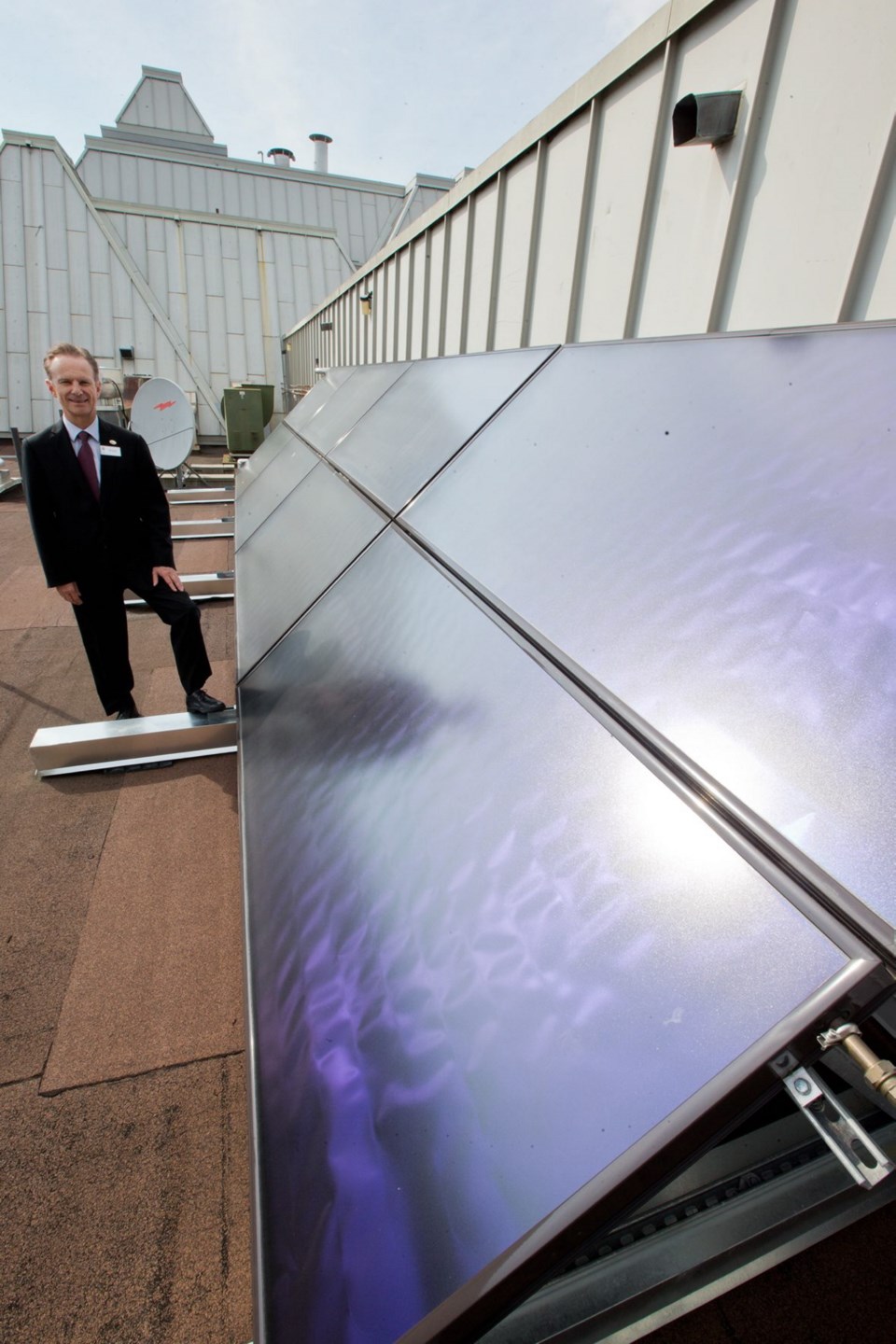The summer’s hot, dry and sunny weather has done more than help fill beds at the Hotel Grand Pacific. It’s helped the 304-room hotel trim some of its natural gas bill by harnessing the power of the sun.
The hotel installed eight solar panels on its roof last fall as part of a thermal water-heating system and it’s definitely made a difference to the bottom line, said general manager Reid James
“We are seeing savings for sure. When we turned it on for a two-week period in May, with intermittent sun, I was told it [saved us] the equivalent of running 100 space heaters for one hour, which is pretty cool as they draw a lot of power,” said James.
Though he hadn’t yet compiled a dollar figure to represent the savings, James said the steady sun through the summer has meant big savings through the hotel’s busiest months.
“It’s been great in July and August so far,” he said, noting it is all part of a plan to cut down on natural gas usage.
Reid did note the energy savings are estimated to be 16,625 kilowatt hours, the equivalent of heating the water for three homes for a year.
Captured solar energy from the rooftop panels is supplying 2,700 litres of the hotel’s domestic hot water and pool heating.
The solar panels are part of a system that includes a new heat pump and heat-recovery system that will heat hot water throughout the hotel.
The entire system cost between $25,000 and $30,000, but the hotel got a grant of $4,750 from the Capital Regional District’s solar program.
It was the first hotel to take advantage of the program.
“Solar energy is a renewable resource that can displace fossil fuel use and reduce greenhouse gases. The CRD solar incentive program is great news for anyone wanting to control their future energy costs and contribute to sustainable communities,” said Nils Jensen, chairman of the CRD Environmental Services Committee. “Greenhouse gases from buildings account for 37 per cent of the total emissions generated in the region.”
The CRD program is funded by the federal government’s Clean Energy Fund and is a partnership between the City of Colwood and the CRD. About 75 grants are still available to homes and businesses on a first-come, first-serve basis.
The program incentives cover up to one-third of the cost of a solar hot water system.
To be suitable for solar, a home or business needs to be in a location with little to no shade on the roof. There also has to be between two and five square metres of space available on the roof for the solar panels and space inside for a second hot water tank for solar pre-heated water.
“We congratulate the Hotel Grand Pacific for their leadership,” Victoria Mayor Dean Fortin said in a statement. “Cities, working with their citizens and businesses, have the greatest opportunity to affect climate change.”
It’s not the first change the Grand Pacific has undertaken to help shrink its environmental footprint.
Early in 2012, the hotel’s Victoria Athletic Club became one of two gyms in North America to bring in new SportsArt cardio equipment that generates power for use in the building.
The SportsArt Green System includes four stationary bikes, three recumbent bikes and three elliptical trainers that become human-powered generators that push the energy produced back into the grid where it is used by the closest source.
The gym paired the equipment with a locally developed Ecofit wireless communication system to show users how much energy they’re generating.
Working out at a quarter of a machine’s capacity generates sufficient energy to power a laptop computer, and if all 10 machines at the gym operate at an average output range, they produce enough energy to power 120 compact fluorescent lamps.
“It’s been OK. I think it’s novel for lots of people and fun,” said James, noting workouts are not affected while power is generated for the hotel.



